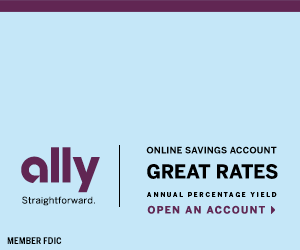Borrowing Money After College

- Say no to credit cards – When at all possible, avoid using credit cards as a line of credit (of course, buying stuff is fine if you can pay off the balance each month). The interest that you have to pay on most cards is about what you’d expect if you borrowed money from the Mob.
- Suitable borrowing options – While we don’t recommend carrying debt on credit cards, lines of credit from a bank such as Wells Fargo and Commerce are a good alternative. P2P lending sites like Prosper.com and LendingClub are another option. And for loans on cars, businesses, and other big-ticket items, check out traditional bank loans.
- Help from the ‘rents – Don’t be ashamed to ask your family to bail you out when you’re in a jam. No other source will be as generous with terms. Just be sure to follow the IRS family lending guidelines.
- Maintain your credit – An important element of borrowing money is ensuring that you have good credit. Get a free credit report at from Equifax, Experian, or TransUnion. Then, learn how to build your credit so that you’ll be able to get that mortgage down the line.
- Start saving – The easiest way to stop borrowing is to begin saving. Get into the habit of putting even a small sum of your paycheck into some type of savings account or investment portfolio every month. Learn more about the power of investing and let your money work for you.
Many students form addictions in college, and I had a bad one. Everyone around me was doing it too; it was so easy. So accessible. I started to want it more, to need it. I’d get one supply and run through it in a night, leaving me begging for another dose the next day
.
So what was my drug of choice? Borrowed money. And it’s one of the most dangerous things to become dependent on, especially in college. Pushers love to throw money at students like they’re a pack of starved hyenas. Everyone’s primed to borrow hugely irresponsible amounts in the name of “education,” and few are above pocketing the “leftovers.”
But what happens when you graduate? Take it from me—banks are not lining up to loan you the $20,000 you want to pimp out our new pad with a flat-screen TV, surround sound, mirrored ceilings, and a bidet .
However, if you need to borrow money wisely (like to pay that broker’s fee and security deposit on your new apartment), there are resources out there to help you. Here are some options to check out:
The Fam
Like your naked baby pictures, loans are best kept in the family. A banker probably won’t love you like a brother, and if your family is capable and willing, you probably won’t find better terms anywhere else. Don’t be too proud to ask for help. Your family might prefer that you borrow from them rather than get suckered into a high interest deal with a sheisty lender. Just make sure to follow the IRS rules on loans to family members.
Bank Loan
This early in the game, it isn’t likely that recent grads will need (let alone qualify for) a bank loan.
But if we want to start a business or buy a car, it’s worth looking into. Just be prepared to answer a lot of questions and be scrutinized intensely. Traditionally, you don’t apply for bank loans the way you do for credit cards. No “instant approvals” or easy online applications. Instead, you have to sit down with a banker who assesses our credit, collateral, and character before handing out a dime.
Non-traditionally, you could visit a site like LendingTree.com to see how you fare amongst lenders who “compete” for your business. The process is easy and free, so it's a good starting point to see if you get any bites. However, the site sets minimum benchmarks for certain loans so you might not even be able to use it, and bare in mind that you may still get better terms somewhere else.
Peer to Peer Lending Sites
P2P networks are no longer just useful for pirating the new Lil Wayne album. Now there are P2P lending sites like Prosper.com. Prosper is part Myspace, part eBay. Borrowers create personal profiles (with pics!) that tell their personal story of why they need a loan. Then lenders, if moved, bid to help them out! Also, borrowers can have multiple lenders, not just one. Just say you are stuck in Nigeria trying to save millions of dollars from a corrupt government and people will be fighting over you before you know it!
Bank Line of Credit
When I opened a checking account at my bank, I also had the option of opening a line of credit. A line of credit is like a little safety net. As with a credit card, the limit on a line of credit is determined by your credit history and income. But, unlike a credit card, a line of credit can’t fit in our wallet or be swiped to make stupid, impulsive purchases—just to be clear, that’s a good thing.
In the old days, if someone cut a check for more than he had in his account, the check would bounce, he’d get charged around $30, and the guys with wooden bats would come looking for him. But now there's got overdraft, which is basically an extra checking account that covers you in case you want—or need—to spend more than you have. Needless to say, this cozy little net doesn’t come free; you can expect a reasonably hefty rate of interest that could very well be more than that of your credit card.
For more information and other options, check out Wells Fargo and Commerce Bank.
Credit Cards
Credit cards are fast, easy options for borrowing money—the red flags should be going up already, because no-strings-attached cash is rarely “fast” and “easy.” At the end of the day, the interest rates charged by credit cards are not competitive. However, if used wisely, credit cards can get you out of a bind, and they have the added benefit of building your credit as long (as you keep up with your payments).
When applying for a credit card, stay focused and do some prep work by reading about picking the right credit card. You might feel peeved that you can’t get higher credit limits and lower APRs, but it’s probably a good thing. For now, you shouldn’t be spending like a madman, and you should be paying off your balance in full each month if you can. Click here to compare cards and figure out which ones you might be able to qualify for.
Think about it this way. Let’s say there’s a Chloe sample sale or a Circuit City sale and you swipe for a thousand dollars that you can’t cover. With a 20% APR, that means you’ll owe $1,219.39 by the time the year is out. Be aware so you don’t have to sell off that new flat-screen or hawk those shoes on the side of the street.
Charge Cards
A charge card looks like a credit card, smells like a credit card, but if you don’t pay in full every month you’ll get hit with the Guns of Navarone. There is no "minimum balance" other than the full balance, and once you're late, high interest rates kick in and you risk losing your ability to get further loans. American Express offers the most popular version of this strange beast. Just be sure to think of it like a very short term (i.e., one month) loan that you absolutely have to pay off at the end of the period.






Comments
(0)POST YOUR COMMENT